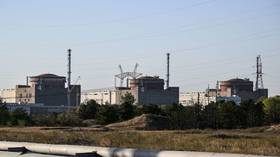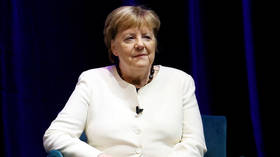Dow Jones drops more than 500 points, adding to week’s steep losses on US markets
US stocks saw another huge selloff on Wednesday, with the Dow Jones Industrial Average losing more than 560 points, or 2.2 percent, just days after the worst day of the year on Wall Street.
The S&P 500 index, representing America’s 500 biggest corporations, also fell 1.9 percent, which brought both the Dow and S&P 500 down more than five percent for the month.
The Nasdaq Composite traded 1.7 percent lower. The tech-heavy index is down a hefty 5.8 percent for August.
Also on rt.com Pot calling the kettle black? US accuses China of currency manipulation... but what does that mean?Investors are signaling a general return to safe-haven assets, with increased trading in government bonds and gold reaching a more than a six-year high of $1,510.25 an ounce.
Experts explain this by the ever increasing concern over the escalating US-China trade war and its impact on the global economy.
“There are two factors that are causing this reversal in market – rates are falling and gold is moving higher. Investors are very much concerned about the trade war and its expansion and that’s certainly being manifested in the price to gold,” Peter Cardillo, chief market economist at Spartan Capital Securities in New York, said, adding that nonetheless “investors need to be prudent and cautious.”
On Monday, the yuan fell to its lowest level against the US dollar in over 10 years, below 7 yuan per US dollar, after Trump threatened additional tariffs on Chinese goods.
Also on rt.com ‘Gambler Trump plays poker while China plays chess’, thinking a few moves aheadThis caused the worst sell-off of the year on Wall Street, with the Dow closing 767.27 points down, a loss of almost three percent. The S&P 500 also dove almost three percent, while the Nasdaq Composite was down 3.5 percent – the worst percentage drop for all three market indexes in 2019.
This led to US President Donald Trump labeling Beijing a "currency manipulator," overlooking the fact that China’s national currency sank following Trump’s earlier threats to hit the country with new tariffs.
In a tweet last week, Trump announced a new 10 percent tariff on an additional $300 billion worth of Chinese goods to be introduced since September 1.
The plan infuriated Beijing, which promised to take countermeasures if the United States was committed to imposing the tariffs. The ministry’s spokesperson, Hua Chunying, was quoted by Reuters as saying that while China does not want a trade war with the US, it is not afraid of fighting one.















